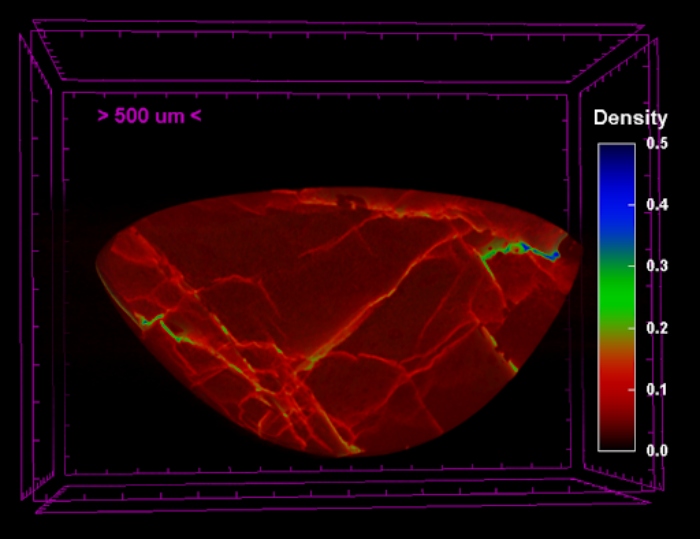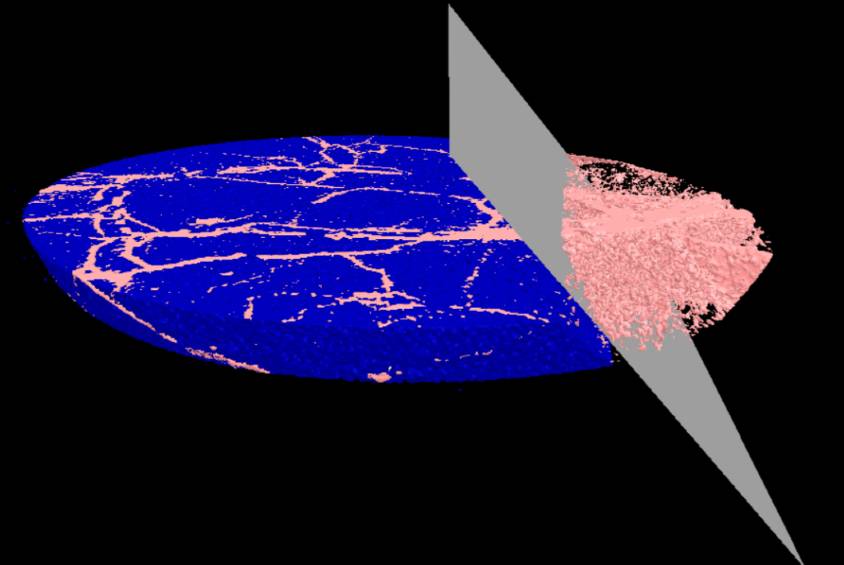Synthetic gems and pearls can be difficult to detect, providing a costly challenge for owners, insurers and valuers. But now, research from Sheffield Hallam has shown that hi-res micro-computed tomography (µCT) can be used as a fast and reliable visualisation technique.
Mapping the microscopic
There are already a number of technologies used to visualise precious and semi-precious stones. While these are more accurate than light microscopy and handheld loupe, they come with limitations such as access, cost, time, resolution and destructiveness.
Benchtop µCT is a powerful imaging tool which combines X-rays, filters and tomographic rotation. It’s used to see inside objects smaller than 70mm² and map their internal microarchitecture. Further analysis can identify density, porosity, thickness, volume and other parameters.
Aside from providing high-definition 3D images, it’s also non-destructive. This makes it an ideal technology for life and material sciences, used to examine everything from lung tissue to lava rock. So why not precious stones too?
Using µCT to verify precious stones is not a new idea1. But recent technological advances in resolution, scan time, cost and batch scanning modes have made this technology more accessible.
Accessing technology at the Sheffield Multimodal Imaging Centre, researchers experimented on precious stones of varying authenticity, chemical treatment and clarity. The single-blinded experiment included pearl, jet, jade, sapphire, ruby and ivory.
Spotting a fake
Samples were scanned using either copper or aluminium filters or a combination of both. The resolution of samples ranged from 9-13.4 µm with an average scan time of 24.3 minutes.
Post scanning reconstruction optimisation was achieved using 40% beam hardening, ring artifact correction, one degree of smoothing and automatic post-alignment correction.
The research identified clear differences in the internal architecture of natural versus cultured pearl, and natural versus imitation shell pearl. These included internal morphology (fractures/’onion-like’ structure) and changes in pearl density.
Differences in elephant ivory versus ‘vegetable’ ivory (a plant-based alternative) could also be detected based on material density and striations. And natural variations in the density of jet were used to authenticate it against other materials commonly used for imitation.
Cracks in the stone
Gemstones are often chemically treated with polymers and elements such as titanium, iron and nickel to stabilise or intensify colouration. This can be used to artificially increase value.
Jade which had been chemically weakened before impregnation with a lower density polymer to stabilise and fill large inclusions was clearly visible in comparison to an untreated jade example.
The µCT was also able to detect lead-glass infill in a heavily fractured ruby (Figure 1). Differences in infill material versus original ruby were able to be separated by density to create a 3D map of the microfracture profile (Figure 2).



